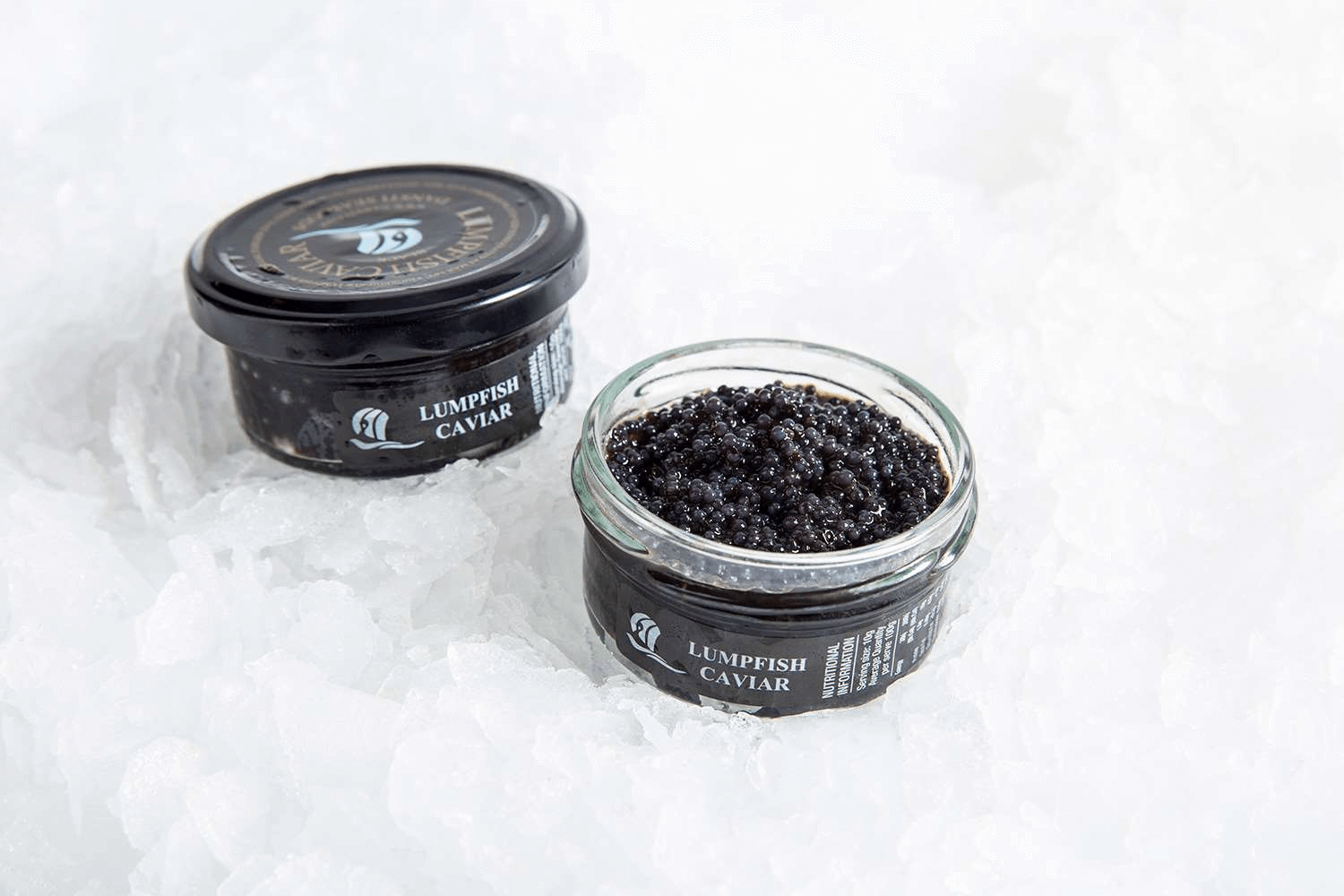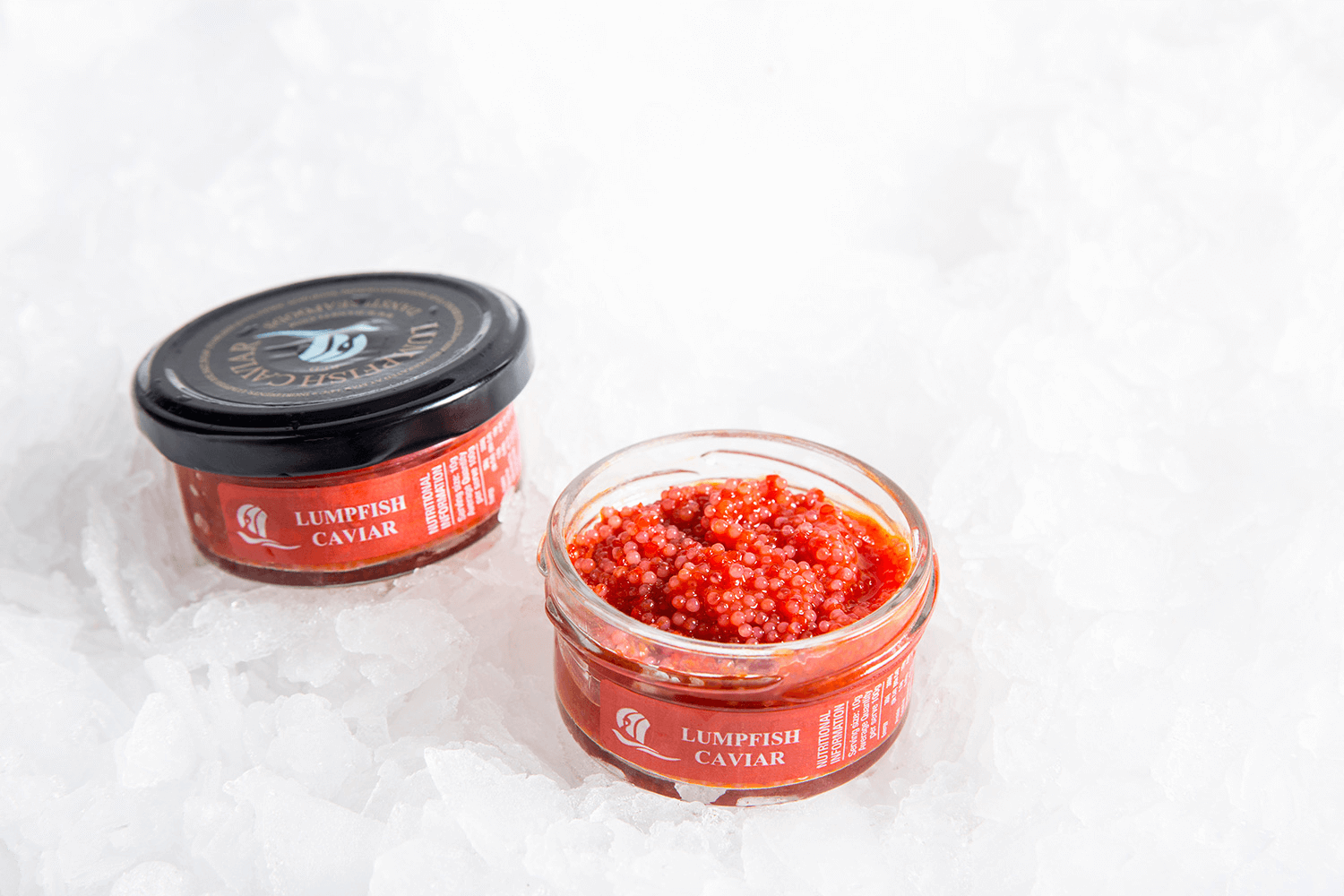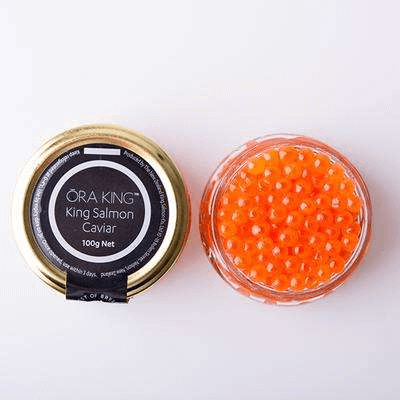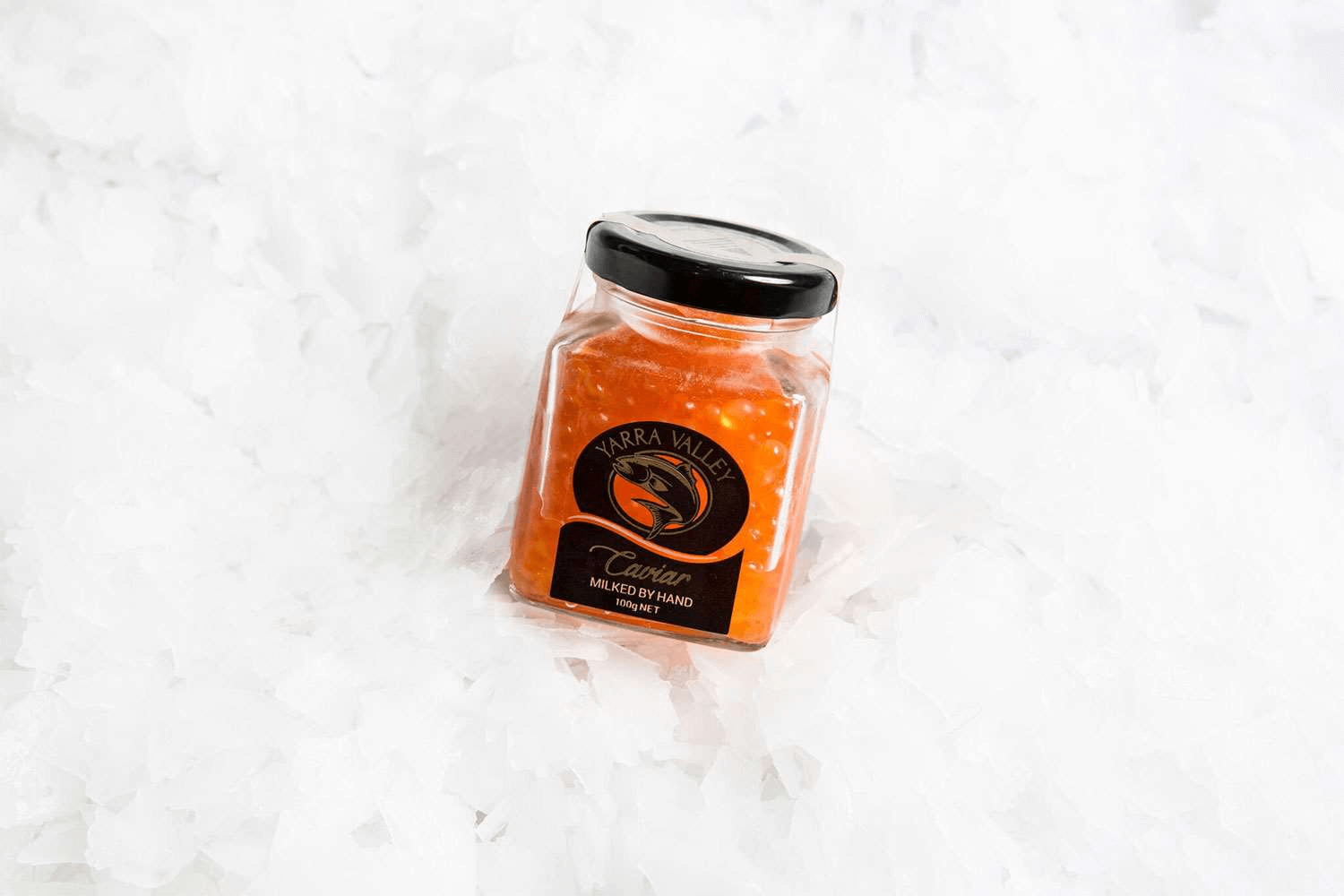

CHRISTMAS ORDERS ARE CLOSED!
CLICK HERE TO PLACE YOUR NYE ORDER.
Delivering for New Years on the 27th, 29th, 30th and 31st December direct to your door.



Want specialty caviar? Try this black lumpfish caviar as an appetiser or as an addition to any fancy dish when you’re hosting a party.
Ah, caviar—the epitome of luxury food. It’s reserved for special occasions, and like fine champagne, it’s quite the status symbol. But how can something so seemingly simple command such high prices? What does it even taste like and what are the best ways to serve it? Let’s dive deep into the delicious world of caviar.
Caviar is a delicacy made from the eggs (or roe) of the sturgeon, a large, prehistoric fish known for its buttery taste and texture. These eggs are processed and salted to create small, firm beads that vary in colour from light to dark shades of grey or black. While all female fish lay eggs, only sturgeon roe can be processed into caviar.
Caviar, traditionally derived from the abundant wild sturgeon populations in the Black and Caspian Sea regions, has faced challenges due to overfishing and habitat loss. As a result, caviar production has shifted to various global locations where sturgeon are now sustainably farmed.
Though quite similar, caviar and fish roe are actually two different things. Caviar, as mentioned earlier, refers to the processed eggs of the sturgeon. On the other hand, fish roe is a general term that refers to the fully ripe eggs of various fish species, including sturgeon. It’s important to note that not all fish roe is appropriate for human consumption.
While sturgeon roe is highly prized and associated with luxury food, fish roe can vary in quality and flavour depending on the type of fish and how it’s processed. Think of it as a lower-quality alternative to caviar.
Caviar is typically salt-cured, a process that helps preserve the fish eggs while also enhancing their flavour. It involves salting the roe and then storing it in a glass jar or tin for several months. During this time, the salt will draw moisture from the eggs, creating a paste-like consistency. Because the sturgeon eggs are preserved, the caviar is safe to eat for up to several months when stored in an airtight container.
Caviar has a complex flavour profile that can vary depending on the species of sturgeon and the type of caviar being served. Generally, caviar can be described as having a briny, salty flavour with a slightly sweet finish.
There are several varieties of caviar, each with its unique flavour and texture. Some of the most popular types of caviar include:
The most expensive caviar comes from the Beluga sturgeon in the Caspian sea. It can weigh up to 1,200kg, making it the largest in the sturgeon family. Beluga caviar is considered to be the highest quality of caviar, with large, firm eggs that have a nutty, buttery flavour.
Ossetra caviar comes from the Russian sturgeon, which has smaller eggs than Beluga. It’s known for its slightly nutty flavour and creamy texture.
The Sevruga caviar might have the smallest eggs, but it has a more intense creamy, buttery flavour than Beluga or Oscietra.
Considered the more sustainable caviar compared to European caviar derived from overfished sturgeons, the Kaluga caviar offers an earthy, buttery flavour similar to the Beluga caviar.
Caviar harvested from salmon eggs gives off a distinct orange colour and a slightly sweet flavour.
There are several sturgeon species found in the US—such as the lake sturgeon, wild Atlantic sturgeon—that can be processed into caviar. But in general, American caviar has a mild, nutty and slightly briny flavour with a delicate texture.

Enjoy a pleasant saltiness that stands nicely with other ingredients. Get your hands on this red lumpfish caviar.

There’s a mild, distinct flavour to that vibrant orange colour. Try the Ora King salmon caviar!

Experience Yarra Valley caviar’s crisp bursts of flavour. It’s another premium salmon caviar!

The Huon Tasmanian salmon caviar is an award-winning hand-milked caviar you must try.
Apart from the type of sturgeon, caviar is also classified based on quality (i.e., size, texture, colour and firmness). Here are the two main grades of caviar:
Caviar is expensive for a few different reasons. For one, the harvesting process is labour-intensive and requires special equipment. Furthermore, sturgeon take years to reach maturity (female sturgeon mature late), making them difficult to breed and harvest in large quantities. Certain species of sturgeon, such as the Beluga, are rarer than others, making them more expensive than other types of caviar.
Caviar is typically served on its own, as an hors d’oeuvre or as part of a more elaborate dish. When serving caviar, it’s important to use a non-metallic utensil, such as a mother-of-pearl spoon, to avoid the metallic taste. It’s best to avoid over-salting the caviar, as this can overpower the natural flavour of the eggs.
Caviar is best served chilled—on a bed of ice or in a chilled container. It can also be served with accompaniments, such as blinis, crème fraiche or hard-boiled eggs.
Anyone who appreciates the finer things in life understands that caviar isn’t just any other food item. While the price may be a cut above your everyday fish roe, the taste, texture and overall experience of eating caviar is worth every cent.
Want to incorporate delicious caviar into your next special meal? Buy fresh caviar online from Manettas Seafood Marketplace and have it delivered to your home at a time that suits you.